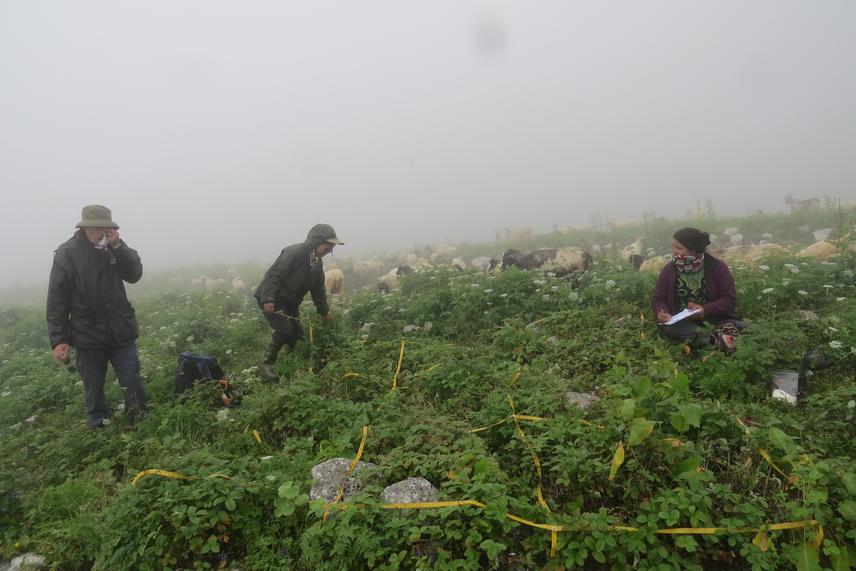Deep Jyoti Chapagain
The aims are to study the population ecology of the study species and to develop the sustainable harvesting models of the study species.

The project aims to study demographic parameters and harvesting sustainability of Aconitum spicatum, Allium wallichii and Dactylorhiza hatagirea in Annapurna Conservation Area and Apinampa Conservation Area of Nepal Himalaya.
Stratified random sampling will be used to design the plots. In each horizontal transect, permanent plots of 20 m x 20 m , 3m x 3m and 2m x 18m will be established for Dactylorhiza hatagirea (such a large size of the plot is considered because of the sparse distribution of the species) Allium wallichii and Aconitum spicatum respectively. Each plot will be divided into four equal subplots (10m×10m) for Dactylorhiza where all the subplots will be subjected for detailed population studies (no harvesting treatment for this species because of the conservation status and legal issues). In case of Allium each plot will be divided into nine subplots of 1m x 1m and in case of Aconitum each plot will be divided into nine subplots of 2m x 2m among which only five subplots will be systematically selected for harvesting treatment and other biological details (Ghimire et al. 2005, 2008; Yakimowski and Eckert 2007).
The harvesting treatments will be applied in each plot of all the populations. In each permanent subplot, all the individuals in different size/stage classes (seedling, juvenile, adult vegetative and adult reproductive) will be marked separately with aluminum tags. Plots will be marked properly and harvesters will be requested not to harvest plants from permanent plot during the study period (Mandle and Ticktin 2012). Among the five systematically selected subplots, one subplot will be designed as control subplot and rest other four subplots will be randomly assigned for higher level of harvesting treatment. In case of Aconitum and Allium harvesting treatments will be: removal of 25, 50, 75 and 100% (Ghimire et al 2005) and all biological details will be revaluated during 2016.
The permanent plots will be revisited in July/August in successive years (2017-2018) to monitor changes in population structure, density, estimation of survival and mortality for plants of each size/stage class.
Matrix population models and life table response experiment analysis will be carried out to explore variation in demographic parameters in response to various harvesting treatments across altitudinal gradients.
The findings of the study will have a long term implications for sustainable utilization and conservation of these important MAPs in Nepal.